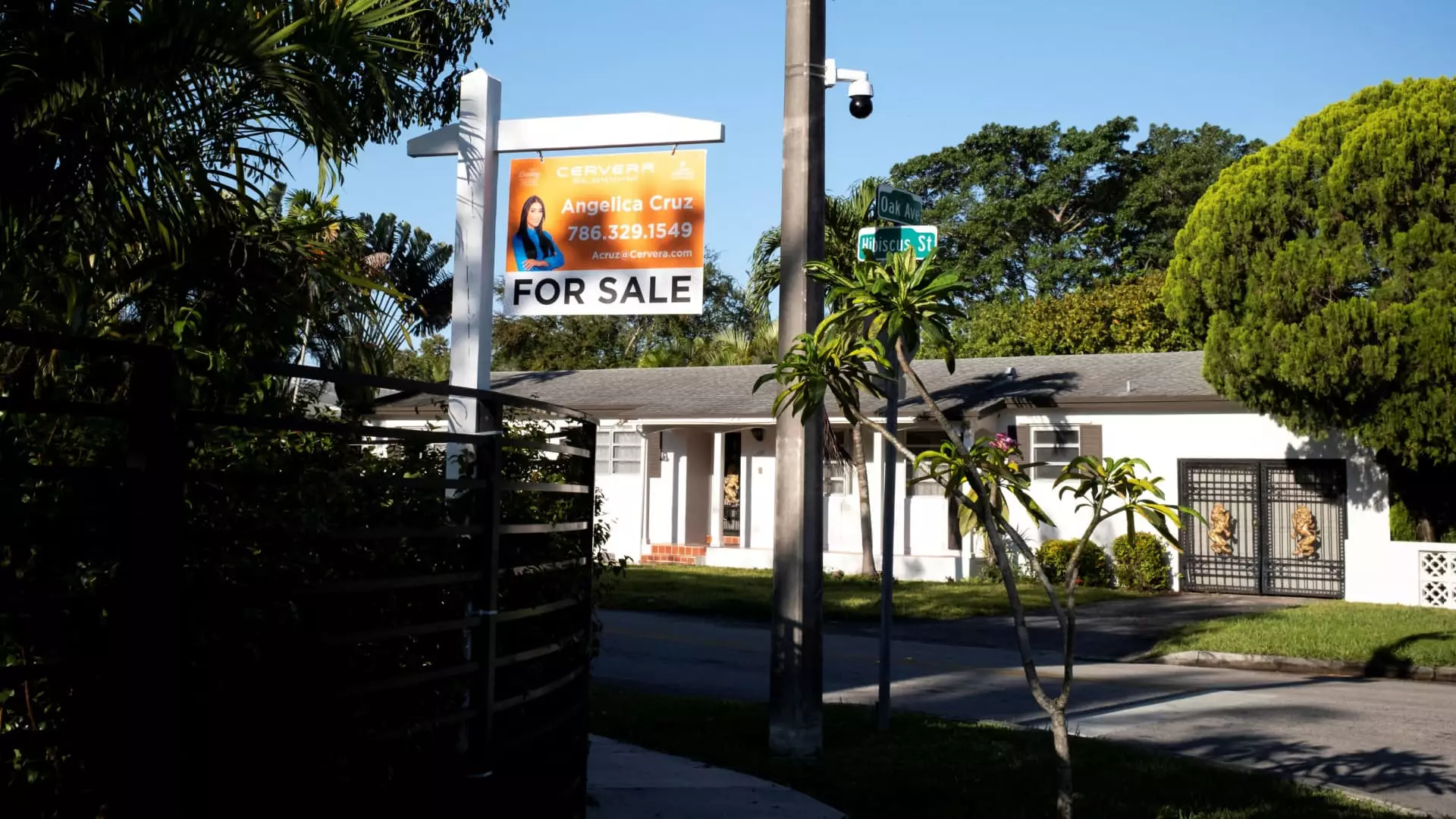As we delve into the current state of the housing market, it’s impossible to overlook the critical interplay between soaring mortgage rates and a shaky economy. In March, the National Association of Realtors (NAR) exposed a disconcerting reality: the sales of previously owned homes plummeted by 5.9% from February to a meager 4.02 million units on a seasonally adjusted basis. This drop marks the direst sales pace for March since the housing crisis of 2009. While many might have hoped for recovery in this historically significant spring market, what we are witnessing appears to be a grim prelude to tougher times ahead.
But is this merely seasonal fluctuation or an indication of something far more debilitating? The fact that sales dipped across all regions—most spectacularly in the West, where prices soar, with a staggering decline of more than 9%—suggests that the challenges facing homebuyers are both widespread and alarming. With mortgage rates hovering above 7% for a considerable period earlier this year, potential buyers are understandably hesitant. A 30-year fixed mortgage, which homeowners traditionally rely on to budget for their lives, now feels more like a ticking time bomb for their finances.
The Paradox of Inventory and Prices
You might think that an increase in available listings—approximately 1.33 million units, a nearly 20% rise from March 2024—would herald good news. However, this influx does not equate to higher sales. The current supply translates to a lean four-month stock at the current pace, whereas a six-month supply typically indicates a balanced market. Therefore, we are left with an unsettling paradox: more inventory is triggering a stagnation of sales, yet prices remain precariously high.
In March, the median price for an existing home hit $403,700—an all-time peak for the month, albeit with a subdued annual growth rate of merely 2.7%. This increase is the smallest since last August and signals that the growth in real estate values may be reaching its limits. The precarious financial position of many potential buyers means that the dream of homeownership is shifting further out of reach for the average American. Thus, we must ask ourselves: how high can these prices go before they begin to tumble?
Initial Buyers and Household Wealth: A Distorted Landscape
First-time homebuyers made up only 32% of the market in March, holding steady compared to the previous year but far below the historical norm of around 40%. This demographic plays a crucial role in establishing market vitality, and without them, the housing landscape appears only to darken. Conversely, all-cash sales have receded to 26%, reflecting potential investor wariness amid economic volatility. Yet, investors remain a stagnating force, accounting for 15% of sales, likely eyeing the market’s future with cautious optimism.
It’s essential to consider the counterintuitive notion that while residential real estate values are peaking at $52 trillion, many families are feeling pinched rather than rewarded. Any surge in home prices—a mere percentage point increase—adds more than $500 billion to household wealth. However, such incremental growth does not take into account the barrier it raises for buyers, especially first-timers who find themselves priced out of the market.
The Future Looks Bleak
With financial anxiety pulsating through the market and an unsettling increase in canceled contracts reported, the NAR’s forecast appears grim. As Robert Frick, corporate economist with Navy Federal Credit Union, noted, “March numbers are bad, but they’re likely to get worse.” The underlying instability is palpable, with the specter of rising interest rates continuing to loom over both buyers and sellers.
In a landscape marked by precarious financial decisions, the repercussions of expensive mortgages could spell disaster not just for potential homeowners but for the economy at large. As we face an uncertain future, one thing remains abundantly clear: the invisible hand of market forces is tightening its grip on a populace already reeling from the weight of excessive financial burdens. Instead of fostering growth and progress, the housing market increasingly resembles a quagmire from which escape becomes ever more elusive.


Leave a Reply